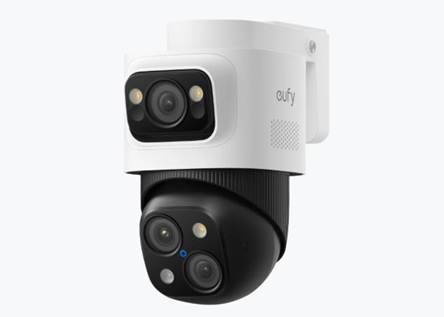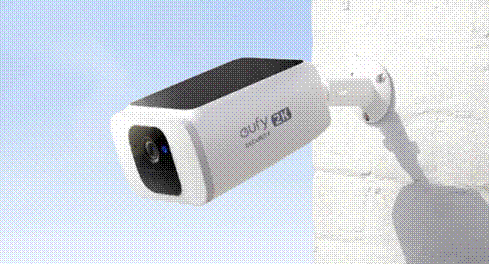Outdoor surveillance cameras are no
longer a luxury--they’re a necessity for protecting homes and businesses. But
with two dominant technologies--POE (Power over Ethernet) and wireless--how do
you decide which is right for you? POE cameras use a single cable for power and
data, offering stability, while wireless models prioritize flexibility. This
guide breaks down their differences in cost, installation, and performance to
help you make an informed choice. Whether you’re securing a sprawling property
or a compact yard, understanding these trade-offs is key to avoiding costly
mistakes.

POE vs.
Wireless Cameras: Key Differences Explained
What
Are POE Cameras?
POE
(Power over Ethernet) cameras integrate power and data transmission through a
single Ethernet cable, streamlining installation and operation. This technology
leverages IEEE 802.3af/at standards to deliver up to 25–60 watts of power,
sufficient for high-resolution cameras with built-in heaters (for cold
climates) or PTZ (pan-tilt-zoom) functionality. The wired connection ensures
stable bandwidth, enabling features like 4K streaming, continuous recording,
and real-time alerts without lag. When paired with a UPS-backed network switch,
POE cameras maintain functionality during power outages, making them ideal for
critical infrastructure like banks or hospitals. Installation requires running
Ethernet cables to each camera, which can be labor-intensive but guarantees
reliability. For example, a 16-camera POE system in a warehouse might use a
single 24-port POE+ switch, providing power and gigabit internet to all devices
simultaneously.
What
Are Wireless Cameras?
Wireless
cameras prioritize flexibility by using Wi-Fi for data transmission and
batteries/solar panels for power. They eliminate the need for drilling holes or
running cables, allowing users to mount them on trees, fences, or temporary
structures within minutes. Most models support 1080p or 2K resolution and offer
cloud storage for footage, though local SD card storage is also common.
However, their reliance on wireless signals introduces vulnerabilities: thick
walls, metal roofs, or competing networks can cause signal drops or buffering.
Battery life varies from 2 weeks to 6 months, depending on usage, with cold
weather or frequent night vision activation draining power faster.
Solar-powered variants extend uptime but require direct sunlight and regular panel
cleaning. For instance, a renter might use a wireless camera to monitor their
apartment balcony, relocating it as needed without landlord approval.
How Do
POE and Wireless Cameras Compare in Performance?
Reliability
and Stability
POE
cameras avoid wireless pitfalls by using a single Ethernet cable for data and
power, eliminating interference from walls, microwaves, or neighboring
networks. This ensures reliable, real-time alerts—typically within 1–2 seconds.
Wireless cameras, however, struggle in crowded environments: with 20+ devices,
they may buffer for 5–10 seconds or disconnect during router reboots. Even
under ideal conditions, Wi-Fi range issues (e.g., thick walls) create dead
zones, compromising surveillance. Businesses using wireless cameras for
perimeter security risk missing critical incidents during network congestion.
Power
Supply and Uptime
POE cameras draw power from a
network switch, often backed by a UPS, ensuring uninterrupted 24/7
recording—vital for constant security. Wireless cameras rely on batteries
lasting 2-6 months (shorter in cold weather or with frequent night vision use).
Solar-powered models reduce downtime but risk draining during cloudy weather
and need regular panel cleaning. For example, a wireless camera monitoring a
remote shed could go offline for days post-storm, whereas a POE camera
would continue recording seamlessly.

Which
Camera Type Fits Your Outdoor Surveillance Needs?
Best
for Large Properties or Businesses?
POE
cameras excel in large or commercial spaces with scalable wired setups. A
single Ethernet cable powers and links cameras across warehouses, farms, or
campuses, avoiding signal issues. For example, a 20-acre farm can use 15+ POE
cameras connected to an NVR for seamless monitoring of entrances and livestock.
Centralized NVR software enables motion zones, real-time alerts, and unified
footage review—critical for high-traffic security. Wireless systems falter:
mesh networks still face congestion or dead zones, and managing 10+ cameras via
separate apps is inefficient.
Weather
Resistance and Durability
Both
POE and wireless cameras have weatherproofed ratings (e.g., IP65), but POE
models emphasize ruggedness. Fixed designs permit heavy-duty materials like
metal casings and vandal-resistant lenses, enduring harsh weather and
tampering. Wireless cameras, prioritizing portability, use lightweight plastics
to save battery power and ease mounting. Though durable, these plastics may
crack in extreme cold or bend in strong winds. For instance, a wireless camera
on a thin fence post could sway in storms, risking damage, while a POE camera
bolted to a sturdy eave stays secure.
Conclusion
Choosing between POE and wireless
cameras depends on your needs. Opt for POE for unmatched reliability,
high-resolution footage, and scalability—ideal for businesses or large
properties. Wireless cameras suit those prioritizing flexibility, quick setups,
and affordability, perfect for renters or small yards. Evaluate your property
size, internet stability, and power access before deciding. POE’s long-term
savings justify its higher upfront cost for professional use, while wireless
offers simplicity for casual users. Prioritize security with encryption and
two-factor authentication.
